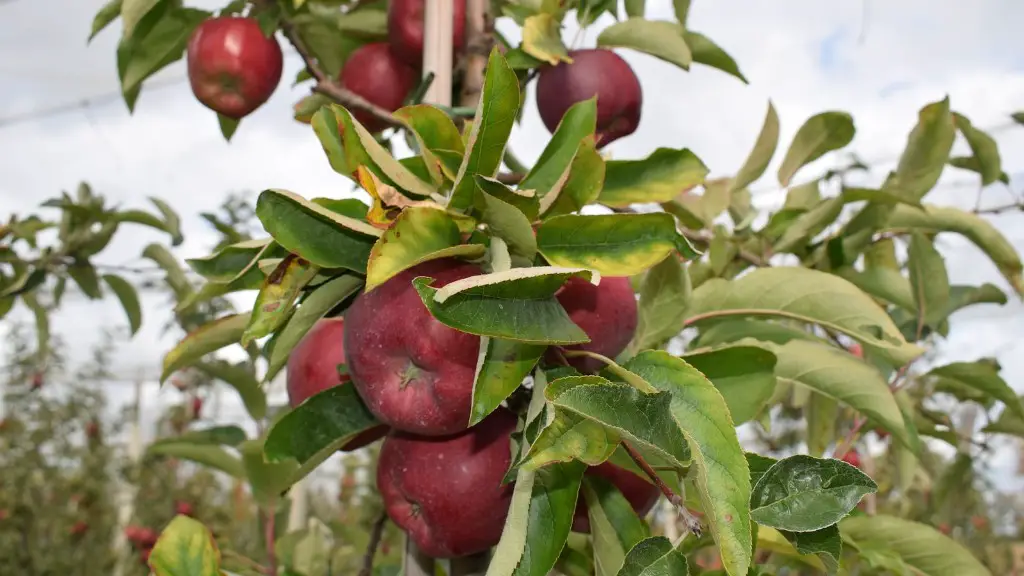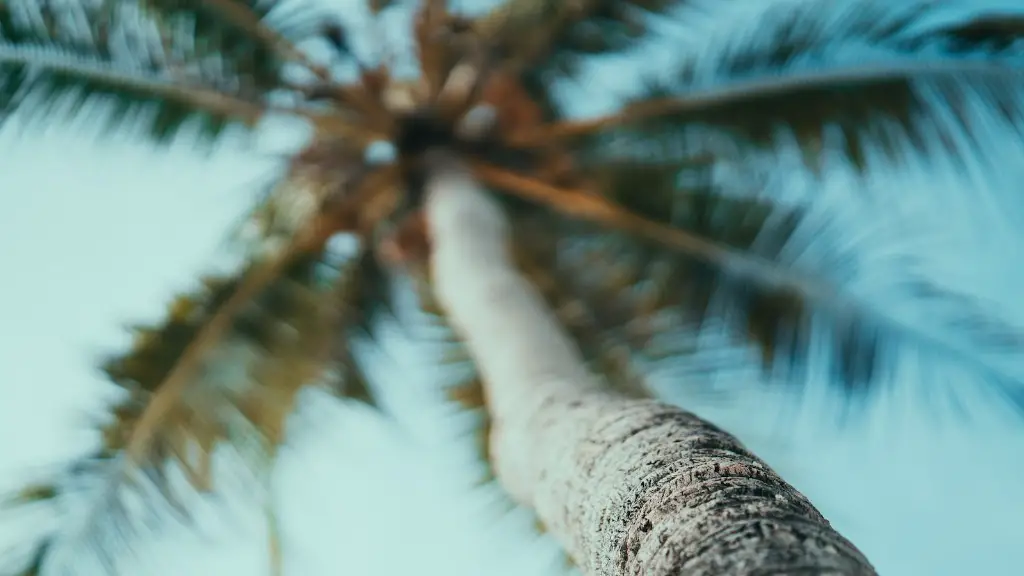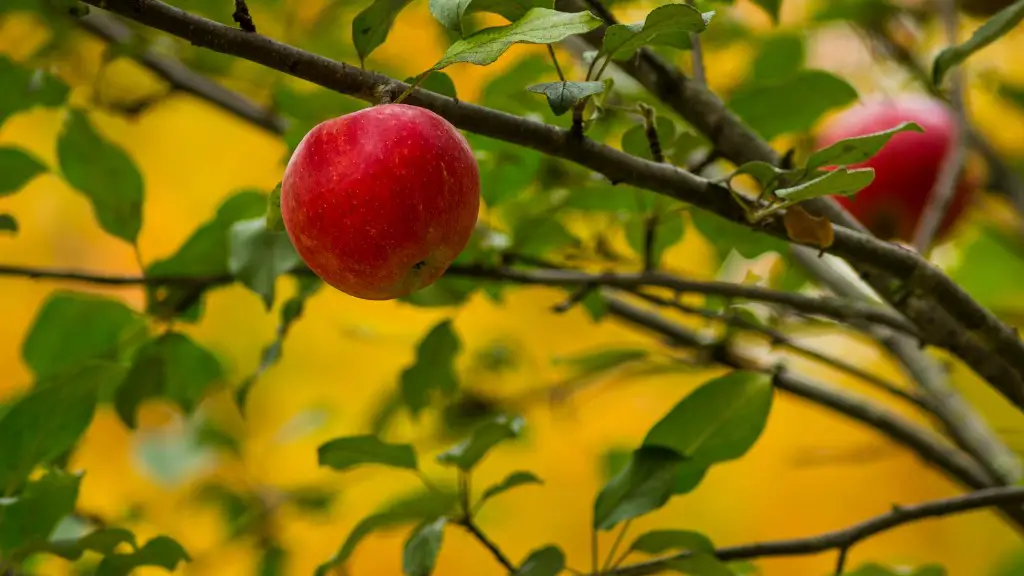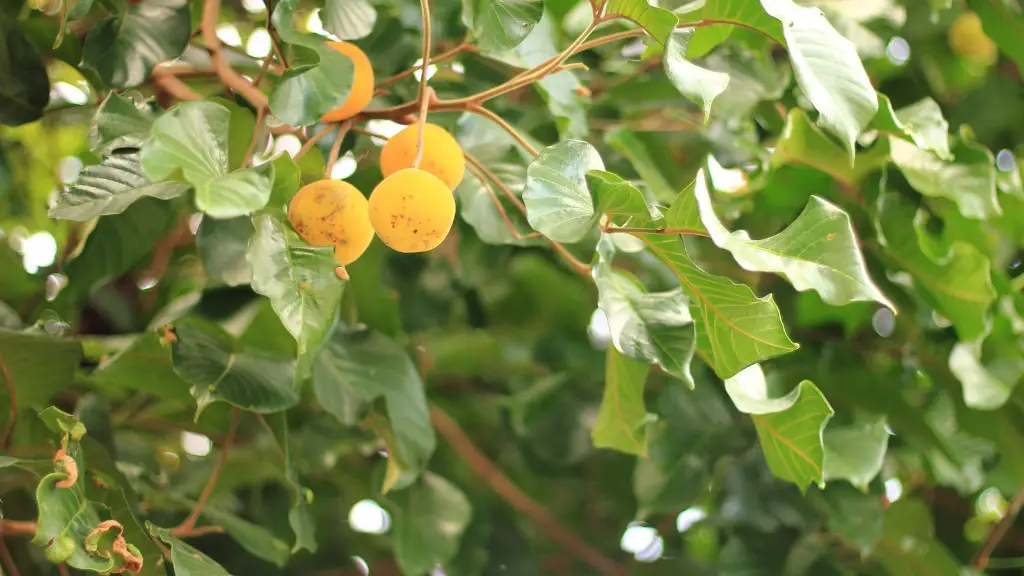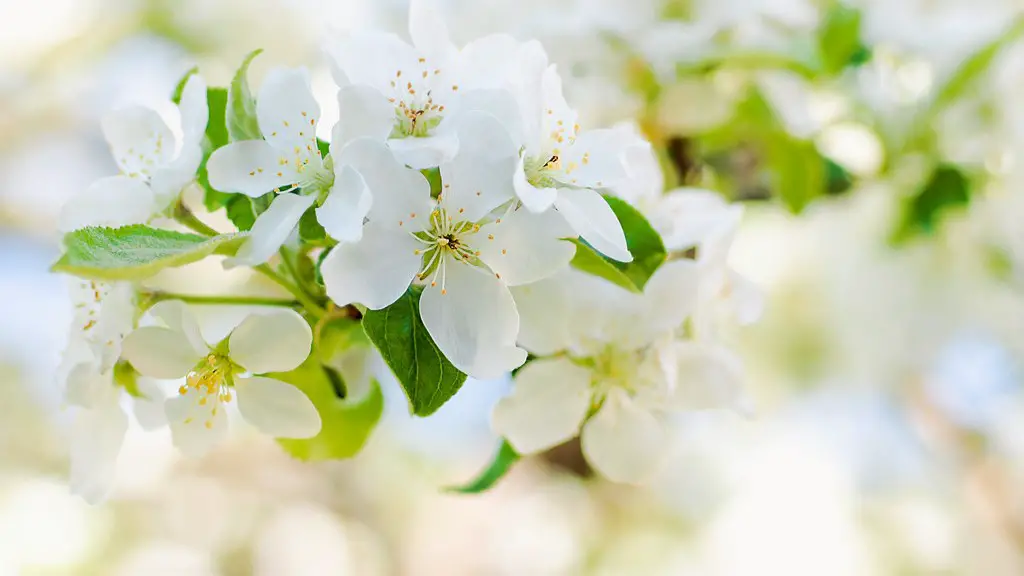A crab apple tree is a small, deciduous tree that typically grows to about 15-20 feet tall. It has a compact, rounded crown and slender, twisting branches. The bark is gray or brown and smooth, with small lenticels. The leaves are elliptical or ovate, 2-4 inches long, and have a glossy green upper surface and a rusty-colored underside. The flowers are white or pink, 1-2 inches wide, and borne in clusters. The fruit is a small, dark-red or yellow apple, 1-2 inches in diameter.
A crab apple tree looks like a small, compact apple tree. The leaves are dark green and the fruit is small and reddish-orange.
How do you tell if it’s a crabapple tree?
The main difference between an apple and a crabapple is the size of the fruit. A crabapple is a tree that produces fruit that are 2 inches or less in diameter. An apple tree produces fruit that are larger than 2 inches in diameter.
Crab apples are safe to eat, but you should avoid eating or chewing the seeds. The seeds from apples and crab apples are toxic and can metabolize into a poisonous cyanide compound.
What is a crabapple tree good for
If you’re a beginner gardener, planting a crabapple tree is a great way to try growing your own food. Crabapples are relatively easy to care for, and they produce a delicious fruit that can be used in a variety of recipes. So if you’re looking to get started with gardening, a crabapple tree is a great option!
Crabapple trees are a beautiful addition to any landscape. They develop a thick canopy of ovate, oval or elliptical leaves in summer, which can be a bright green, dark green, or purple. In fall, many varieties of crabapple tree will clothe themselves in brilliant colors including golden-yellow, red, orange, or bronze, before shedding to the ground.
What month do crabapple trees bloom?
Spring-flowering crabapples are a beautiful and welcome sight in early spring. Their bright blooms remind us that warmer weather is on the way and that the growing season is about to begin. These lovely trees are a great addition to any landscape and are sure to add a touch of beauty and elegance to any property.
Crab apples are a type of apple that is small and tart. They typically appear on the tree in summer and ripen in fall, but the best time to pick them is winter! Freezing temperatures make the crab apples soft and sweet, so they taste better when it’s cold outside. Alternately, you could pick them when ripe in fall and stick them in your freezer for a couple days.
Why don t people eat crab apples?
The crab apple is a member of the apple family. Its fruits are small and tart, and its seeds contain a toxic compound that can turn into cyanide when eaten. However, the flesh of the crab apple is perfectly safe for people to eat.
Crab apples are poisonous to dogs because they contain cyanogenic glycosides. These glycosides release cyanide when they are metabolized, and can cause death in high enough doses. If your dog ate a crab apple, call your veterinarian immediately. If your dog is showing signs of toxicity, such as vomiting, difficulty breathing, or collapse, take them to the emergency vet clinic immediately.
How long do crab apples stay on the tree
Crab apples are typically ripe in the late summer or fall in the northern hemisphere. Many trees have “persistent” fruit, meaning that the ripe fruit will remain hanging on the tree for a month or more.
Although crabapples are a popular choice for small trees in Indiana landscapes, they can be susceptible to insect and disease problems, such as apple scab and Japanese beetle.
Do crabapple trees attract bears?
If you’re planting landscaping near your home, avoid trees that produce fruits or nuts or bushes with edible berries. Yummy landscaping can attract bears and lots of other critters, as many neighborhoods blanketed in crab apple, citrus or pear trees have discovered.
The old wives’ tale that crabapples will keep mice away is just that – a tale! In reality, wild crabapple trees are a vital winter food source for mice, according to the Forest Preserve District of Cook County, Illinois. So if you leave crabapple fruit on the ground, you’re actually attracting mice, not deterring them.
How tall do crabapple trees get
The Crabapple tree is a beautiful tree that flowers in the springtime. The flowers are white and they have a red bud. The tree grows to be 15-25 feet tall. The fruit of the tree is yellow or red. The tree is susceptible to scab and powdery mildew, but it is moderately resistant to fire blight.
Dear Crabapple Tree,
I’m sorry to say that you are too young to bloom and bear fruit. It often takes three or four years for a crabapple tree to be mature enough for these things. I hope you understand.
Sincerely,
The Gardener
What does a crabapple look like in winter?
When looking for a specific type of leaf, it is important to pay attention to the shape. In this case, you are looking for a cold, roundish oval shape. This can be tricky to find, but if you keep your eyes peeled, you should be able to find what you’re looking for!
When it comes to crabapples, there are a number of diseases that commonly occur in home plantings. Scab, cedar-apple rust, and cedar-hawthorn rust are diseases that are usually encountered every year, whereas fire blight is an occasional problem. Many factors contribute to both the occurrence and severity of these diseases. Some of these factors include weather conditions, the type of crabapple tree, and people’s gardening practices.
Conclusion
A crab apple tree is a tree with small, tart apples. The apples are usually red or green, and the tree has a spreading canopy.
The crab apple tree is a small, deciduous tree that typically grows to 20-30 feet tall. Its branches are slender and spreading, and its trunk is often crooked. The tree’s bark is smooth, thin, and grayish-brown, and its leaves are elliptical or oval-shaped and 2-3 inches long. The tree’s flowers are white or pink, and its fruit is a small, red or yellow apple.
